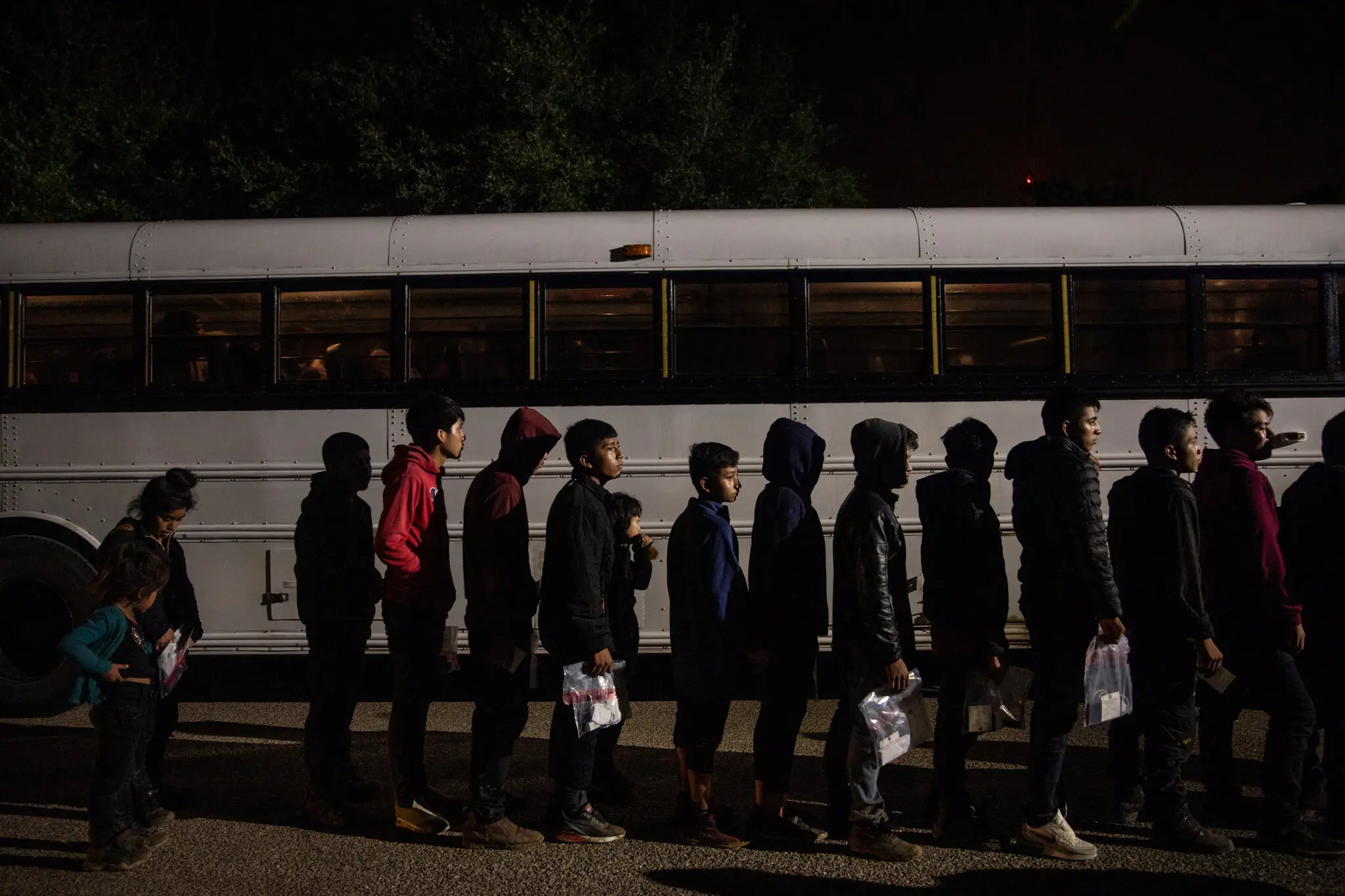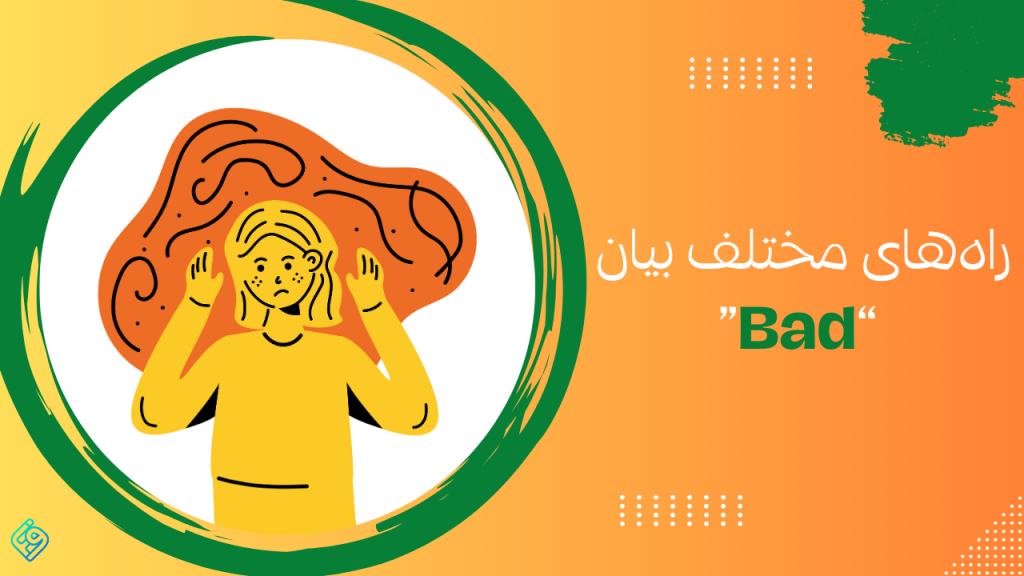A New Child Labor Crisis in America
Migrant children are ending up in some of the most dangerous jobs in the country.
Thursday, March 9th, 2023
This transcript was created using speech recognition software. While it has been reviewed by human transcribers, it may contain errors. Please review the episode audio before quoting from this transcript and email [email protected] with any questions.
Sabrina Tavernise
From “The New York Times,” I’m Sabrina Tavernise. And this is “The Daily.”
A “Times” investigation has found that migrant children are working in some of the most dangerous jobs in the country — in slaughterhouses, on construction sites, and in factories — making products for some of the best-known American brands. Today my colleague, Hannah Dreier, on the failures that have led to a crisis in child labor and now that it’s been exposed, what the government plans to do about it.
It’s Thursday, March 9.
So, Hannah, you’ve been investigating child migrant labor in this country for nearly a year now. And you’ve come out with some pretty remarkable reporting. So tell me how you came to this story. What made you start looking into it?
Hannah Dreier
This is actually something that I’ve been thinking about for years. I’ve been reporting on immigration for more than 10 years. And back in 2018, I was doing some reporting into Trump-era raids on undocumented teenagers. And I realized that a lot of the teenagers I was reporting on were working overnight shifts making cookies for a nationally distributed brand.
And this is sort of an open secret in the immigration world. People know that a lot of the kids who cross the border on their own end up working. So when I started at “The Times” last year, I was thinking about looking into this again. And I assumed that these kids would mostly be working in agriculture. Maybe some would be washing dishes.
But what I found when I really started getting on the ground was something totally different. These are kids working factory jobs in a lot of cases, factories that supply some of the biggest brands — Fruit of the Loom, Ford, General Motors, J.Crew. We found them producing milk for Ben & Jerry’s, packaging Cheerios and Cheetos.
And these are often dangerous jobs. The kids who packaged Hot Cheetos, for example, told me that their lungs burn from inhaling that spicy dust for 10 hours at a time. I found kids who’ve had their legs ripped off by industrial machines, who’ve lost fingers, kids working construction who’ve fallen from five-story buildings.
Sabrina Tavernise
God.
Hannah Dreier
And when I started this reporting, I was expecting to find a handful of children who had ended up in this kind of exploitation. But the experts who I’m talking to estimate this is more like in the hundreds of thousands.
Sabrina Tavernise
Wow.
Hannah Dreier
I personally spoke with 100 children who have recently crossed the border, been released to adults, and are now working in jobs that violate child labor laws.
Sabrina Tavernise
And how did you find the kids you interviewed, Hannah?
Hannah Dreier
It was actually pretty easy to find these kids.
Speaker 1
[SPEAKING SPANISH]
Hannah Dreier
Usually I would get to a new town. And by the next day, I would be talking to migrant children who are working in violation of child labor laws.
Hannah Dreier
[SPANISH]. This is Facebook?
Speaker 1
Si.
Hannah Dreier
[SPEAKING SPANISH]
Speaker 1
[SPEAKING SPANISH]
Hannah Dreier
I spent a lot of time outside of factories at shift changes, so just going in a factory parking lots at midnight or at 6:30 in the morning.
Speaker 2
So we do not allow people. I think we talked to you about it before, right?
Hannah Dreier
I’m just wrapping up with them.
Speaker 2
No, they have to go. You have to go.
Hannah Dreier
Sometimes I would get kicked out by security guards. But even then, I would go across the street and catch these kids as they were coming off shift.
Speaker 3
[SPEAKING SPANISH]
Hannah Dreier
A pattern that I was really seeing was that kids were working the overnight shift so that they could go to school during the day. Kids would often have the same backpacks that they were using at school the next morning around their shoulders.
Sabrina Tavernise
Wow. I mean, these are not the kind of things you think of is happening to children in the US, in the workforce. Help me understand, Hannah, what’s going on here. As you said, we have laws preventing kids from doing this kind of work. So why are these kids ending up in these situations?
Hannah Dreier
What we’re looking at is really a system failure. And as an investigative reporter, I tend to try to focus on one bad actor, one policy failure. And I tried to do that in this reporting. But, really, we’re looking at least three systems that have failed these children.
Sabrina Tavernise
Walk me through those failures. Where do we begin?
Hannah Dreier
So the first failure really starts with the Federal government. They’re the ones who are ultimately responsible for figuring out what happens with a child who crosses the border. So these children are not undocumented. They actually cross the border, turn themselves in to an official, and are then taken to a government shelter. And there, caseworkers figure out if there’s any adult already in this country who can take that child in. But as more and more children have crossed the border, the government has come under huge pressure to try to get these kids released faster than they ever have before.
Sabrina Tavernise
And why is that why are there so many more children coming now?
Hannah Dreier
So the number of kids coming north has really exploded since the pandemic. And that’s partly because the pandemic hit Central American economies really hard. So kids are fleeing a number of things. But they’re really fleeing poverty. Most kids are coming from Honduras, El Salvador, and Guatemala. And even in these remote villages, places where you don’t even get cell phone reception, people were looking around and noticing that the only families able to afford food or cars or running water were the ones living off of remittances.
Sabrina Tavernise
Money from people in the US to their families back home.
Hannah Dreier
That’s right. And a lot of families are sending their kids north because they think it’ll be better for the kids or they hope the kids might be able to send remittances back. So in 2021, more than 150,000 children crossed the border alone. That is completely unprecedented. It’s more than three times as many as were coming in five years ago.
Sabrina Tavernise
So that’s a huge jump. And these kids are coming without their parents?
Hannah Dreier
They’re coming alone. And that’s because the adults in these villages know that if they try to come up and cross the border, they will most likely be turned away. But if the kid shows up by themselves, they’ll probably be let in.
And this goes back to a US policy of never turning away a child who crosses the border by themselves. Instead, the US lets those kids come in and stay usually for several years while they apply for asylum. And the idea there was don’t want to turn a kid away at the border and then have some child alone in a Mexican border town where anything might happen to them.
Sabrina Tavernise
OK, so all of these kids are showing up at the border. And this is 2021, which, of course, is the first year of the Biden administration. So I imagine that this problem is pretty high on his list of priorities.
Hannah Dreier
Yeah, that’s right. This was an early political crisis for Biden.
Archived Recording 1
The Secretary of Homeland Security warns today, quote, “We are on pace to encounter more individuals on the southwest border than we have in the last 20 years.”
Archived Recording 2
One of the biggest concerns, of course, are the unaccompanied minors, these children that are surging to the border that end up being held in Customs and Border Protection facilities that are not designed to house children.
Archived Recording 3
Democratic Congressman Henry Cuellar released these pictures showing unaccompanied migrant children sleeping on floors in a crowded border patrol facility in Texas.
Hannah Dreier
There were all these photos of kids sleeping under those metal space blankets, sleeping on the floors.
Archived Recording 4
Some kids haven’t seen sunlight in days. Others are taking turns showering, often going days without them.
Archived Recording 5
There are more children coming across the border than we have facilities for at this point in time.
Hannah Dreier
And these kids were there because the government didn’t have capacity to take all these kids who were coming across the border into shelters. And so they were sort of piling up at these jail-like facilities.
Archived Recording 5
As of tonight, there are now 4,200 children in custody, which dwarfs the number at the peak of the 2019 border crisis.
Archived Recording 6
They, of course, separated themselves from the Trump-era policies when it comes to immigration. So it begs the question, why would they not prepare for that?
Hannah Dreier
And so the Biden administration was under all this pressure to move these kids out of detention more quickly. And that pressure ended up falling squarely on the Department of Health and Human Services, which is the agency that’s ultimately responsible for figuring out who’s going to take all of these kids in the long term.
Sabrina Tavernise
So, Hannah, explain how things normally work with these kids when it comes to HHS. And what does that pressure mean for this process?
Hannah Dreier
So when a child crosses the border alone, the first thing that HHS does is ask that child who they could possibly live with in the US. And usually the child will have a phone number written on a piece of paper or some idea of somebody who might be able to take them in. And HHS will then call that person and do some sort of vetting to make sure that the person is who they say they are, make sure that they intend to take care of the child, make sure they maybe knew the child back in their home country.
And when everything goes well, kids are released to a sponsor, who’s usually a family member, sometimes a family friend. And that sponsor does what they said they would do. They’ll take care of the kids, send them to school, give them a room to live in. That’s how this is supposed to go.
Sabrina Tavernise
Right, but how is it actually working in practice?
Hannah Dreier
So the case managers who work at HHS tell me that they started rolling back protections that had been in place for years, really rushing through the vetting of these sponsors. They got rid of some background checks. They got rid of some interview questions. They really started paring back the normal vetting that they had been doing to make sure that adults could actually take care of these kids and were actually who they said they were.
This was very upsetting to some of the staff. And some even sent a letter all the way to the bosses at the agency, saying we don’t think that this is safe for kids. We think we’re releasing them to people who might traffic them.
Sabrina Tavernise
Wow.
Hannah Dreier
But the message from the top was still we need to get these kids out of shelters and released to sponsors as quickly as possible. And what people who work at HHS have told us is they would wake up every morning just praying that the discharge numbers, the numbers of these kids going to sponsors looked good for them that day. The programs would start getting in trouble if they weren’t releasing at least 20 percent of kids every week.
Archived Recording (Xavier Becerra)
It’s simple math. It’s addition and subtraction.
Hannah Dreier
We actually got access to a recording of an internal meeting where Secretary Xavier Becerra is berating staff for moving too slowly.
Archived Recording (Xavier Becerra)
If Henry Ford had seen this in his plants, he would have never become famous and rich. This is not the way you do an assembly line.
Hannah Dreier
He’s telling staff something that we’re told he often would say, which is you need to move this like an assembly line. We need to get discharges up.
Archived Recording (Xavier Becerra)
Every time we have to go to the Hill and explain why we’re spending so much money, when most people are struggling to spend a little bit of money for their kids on a daily basis, we try to explain how we’re spending more than $1,000 a day for kids who may not even have the legal right to be here? Not me.
Sabrina Tavernise
Whoa. That’s pretty remarkable.
Hannah Dreier
I mean, it was super upsetting for some senior-level people who’ve been working in this agency for years and years. Some of these senior staff told me that they felt more worried for these kids even than they had under Trump.
Sabrina Tavernise
So, basically, there’s this franticness, right, within HHS, prompted mostly by the politics, it sounds like, to get these kids out of government custody as fast as possible. So what happens to the kids next, after they leave US custody and go to their sponsors?
Hannah Dreier
This is really the second failure that I saw in my reporting. There’s a whole host of issues with who these sponsors are and how they end up treating the children in their care.
I spent a few months talking to one child, Carolina. She had been living alone with her grandmother, who was getting sick in a remote village in Guatemala. And after the pandemic, they often didn’t have enough food. They didn’t have running water. And she decided to come to the US alone last year when she was 14.
Sabrina Tavernise
Wow.
Hannah Dreier
And at a shelter in Arizona, HHS caseworkers called her aunt living in Michigan. Carolina didn’t know this aunt. They had barely ever talked. They had never met.
And the aunt’s first reaction was, I don’t want to take this girl in. The aunt had already sponsored two other children. And she told caseworkers that she was living on $600 a week.
But HHS went back to her because Carolina really didn’t know anybody else in this country. And, eventually, the aunt agreed to take Carolina in. But she made clear that she would have to work and contribute because she really couldn’t support another child.
Sabrina Tavernise
So this aunt is a direct relative of Carolina’s. But she’s never met her before, doesn’t know her, and has financial troubles of her own. But despite all of that, HHS still pushes her to take Carolina.
Hannah Dreier
That’s right. And this is a very common situation because the agency is under pressure itself to get the kids out of custody. And a lot of people think it’s traumatic for kids to spend more time in custody than is absolutely necessary. So even though the aunt is reluctant about taking Carolina in, HHS releases Carolina to Michigan.
Sabrina Tavernise
OK, so that’s Carolina’s situation. But at least she had a phone number of someone who was a relative. What about somebody who doesn’t?
Hannah Dreier
Yeah, thousands of these children are now going to people who aren’t related at all. These are sometimes family friends. And sometimes they’re complete strangers.
I spoke with one child, Nery, who met his sponsor when he was 13 years old. He was living in Guatemala and started talking to this man on Facebook. The man said that if he wanted to come to the US, he would take care of him. He would send him to school.
And so Nery crossed the border on his own. He went through HHS custody and was released to this man. When he showed up, the man said that he was now on the hook for paying back $4,000. That was what the man was charging for helping him come to the US. The man also started charging him for the paperwork that he had to send to HHS to get him released from custody. And he was also charging huge interest on these debts.
Sabrina Tavernise
So this is a 13-year-old who meets somebody on Facebook and comes based on that incredibly tenuous connection. Where is HHS in all of this? Do they ever check in on the kids to make sure the sponsors are actually taking care of them?
Hannah Dreier
HHS makes one phone call after these children are released. They call about 30 days after they’re released to try to get in touch with children and make sure that they’re doing OK. What we found is that a third of children never even answer that first phone call. So 85,000 kids have been lost immediately just over the last two years.
Caseworkers tell us that they wish that there was a lot more follow-up on the other end. If you’re going to release kids quickly, at least provide a lot of checks and balances for them once they’re living out in the world. But for now, all most kids get is the number for a hotline. And this is supposed to be a place where they can report abuse and exploitation.
But what we found was that the hotline did not have a policy of returning these children’s calls. So what was happening was children would call to say, I’m being put to work by my sponsor. And instead of following up, the hotline operators would pass that on to local law enforcement. And children were telling us that they called to report just horrible exploitation and were never hearing anything back.
Sabrina Tavernise
Whoa. It’s like what’s the point of the hotline then?
Hannah Dreier
I mean, that’s what some of these kids told me. I spoke to one kid who had been sleeping in a basement with three cameras watching him at all times, forced to work around the clock.
Sabrina Tavernise
God.
Hannah Dreier
And he told me that when he called the hotline, he at least expected somebody to come to his house, maybe knock on the door and rescue him. Instead, he ended up escaping himself.
Sabrina Tavernise
Whoa. So stepping back here for a second, because HHS is moving so fast to release these children to sponsors, not every sponsor is properly vetted. So not only do you get sponsors like Carolina’s who don’t really have the resources to actually support them, you also get sponsors who are exploiting kids to make money. And because HHS loses contact with a lot of these kids, once they’re off in the world with their sponsor, they’re more or less on their own.
Hannah Dreier
That’s exactly where we’re at.
Even the children who’ve come into this country knowing that they’re going to have to work have no way to imagine the kind of pressure that they’re going to be under. And so what we’ve been seeing is children who really feel like they have no option but to go out and get whatever kind of job they can as quickly as they can. And that means finding employers who are willing to hire children.
Sabrina Tavernise
We’ll be right back.
Hannah, you just told us that many of these migrant kids need to work. But many kids in the US do work, right? That’s not necessarily that unusual. Can you remind us what the law says about kids working in the US?
Hannah Dreier
Totally. So kids are allowed to work starting at around 14. I had a job when I was a young teenager. I know you probably had a job.
Sabrina Tavernise
Yes, I did. I worked picking blueberries in the summertime because I grew up in a rural place.
Hannah Dreier
Exactly, a summer job. It’s really normal and it’s legal. What child labor laws are really intended to prevent are children working when they should be in school, are working so late that they’re not getting enough sleep.
And some professions are banned because they’re too dangerous. These are the kinds of jobs that I’ve been focusing on. So that’s factories, slaughterhouses, construction sites sometimes. I wanted to understand how migrant children were ending up in the most dangerous jobs that are banned for kids.
Sabrina Tavernise
What did you find, Hannah, when you started really looking into these jobs?
Hannah Dreier
So this is really failure number three. The supply chain in the US has become very complicated. And a lot of the biggest brands in this country hire workers through a manufacturer that then hires them through staffing companies. So there’s a lot of separation between the brand and the worker.
For example, Carolina, who we talked about earlier who came here when she was 14, was making Cheerios for General Mills. But she wasn’t working for General Mills.
Sabrina Tavernise
OK. Who was she working for?
Hannah Dreier
She was working at a supplier called Hearthside Food Solutions, which is in Grand Rapids. And it makes and packages food for some of the biggest brands in the country. This is a plant that has the kind of conveyor belts that rip off fingers. And there have been 34 federal safety violations just in the past several years.
Sabrina Tavernise
Wow.
Hannah Dreier
Carolina was working eight-hour shifts and then going to school for eight hours. And just over the course of the months that I was talking to her, she went from going to school every day to often staying at home because her stomach was hurting. She said she just didn’t feel well. Other kids in her class dropped out just over those few months because they said that they weren’t getting enough sleep and they’d rather just work overtime packing Cheerios and Chewy bars than try to balance that huge workload.
But while Carolina was making Cheerios for General Mills and doing this grueling work at a Hearthside factory, she wasn’t even actually hired by Hearthside. She was hired by an outside staffing agency that was hiring a lot of other migrant children and then sending them all to work for this manufacturer.
Sabrina Tavernise
Wow. So very complicated employment structure. It’s like this whole series of Russian nesting dolls in a way, right? And it seems like a natural structure for each of those employment layers to deflect blame.
Hannah Dreier
Exactly. When I got in touch with these companies to say that we had found a factory full of children, Hearthside blamed the staffing agency. The staffing agency blamed Hearthside. And General Mills blamed both of them.
Sabrina Tavernise
But is there plausible deniability, Hannah? I mean, could they genuinely not know that kids were making things at their facilities?
Hannah Dreier
So the companies have told us that they had no idea this was happening. These kids are generally using cheap fake IDs that will have a different name and a different age. Whether or not they knew really doesn’t matter in the eyes of the law. The government can come in and hold the staffing agency, the manufacturer, and the brand accountable.
And former employees have actually told us that at least some supervisors absolutely knew what was going on, that Hearthside knew what was going on, that the staffing agency knew it was dealing with children, and they chose to put those kids into these plants anyway. These companies had an incentive to look the other way. It’s a very tight labor market. And some HR managers told me that they’re desperate for workers.
These are not desirable jobs. The hours are terrible. The pay is bad. And these are dangerous jobs that even adult workers might not want to do because of the risk of serious injury.
Sabrina Tavernise
Which, presumably, children have a higher risk of because they’re less experienced and smaller.
Hannah Dreier
Absolutely. Across the board, children are twice as likely to be injured in any kind of job. I came across one case of a 15-year-old who died on his first day of a roofing job. He fell 50 feet.
Sabrina Tavernise
Whoa.
Hannah Dreier
Here in Brooklyn, a 14-year-old was killed a few years ago while he was working as a food delivery messenger. He was run over in traffic. One child was killed by a 35-ton earth mover that he was driving. He fell out and was crushed. I mean, this is why child labor laws exist.
Sabrina Tavernise
And, Hannah, why aren’t they being enforced?
Hannah Dreier
So the Federal Department of Labor is supposed to enforce all child labor laws. But what people who work there tell me is that they’re really overwhelmed. They’re short staffed. And they’re just struggling to keep up with other kinds of labor violations, tips that come in. And even when inspectors do find a child labor violation, the fines top out at $15,000, which is really nothing for some of these bigger companies.
Sabrina Tavernise
So it sounds like there are these disparate patches of problems, failures in multiple levels that are just disconnected and diffuse. And, as a result, tens of thousands of kids just kind of walked through the door into American society and into dangerous jobs all over the country.
Hannah Dreier
That’s really what my reporting has shown. And people often say that this is something that’s hiding in plain sight. But, I mean, it’s barely hiding. It is in plain sight.
Sabrina Tavernise
It’s just that no one’s really looking at it, right?
Hannah Dreier
Exactly.
Sabrina Tavernise
So what’s the response been to your story, Hannah?
Hannah Dreier
I mean, to their credit, the government’s response to the story was immediate.
Archived Recording 7
The Biden administration is taking action against the growing epidemic of migrant children working in violation of child labor laws.
Archived Recording 8
Child labor is abuse. And it is unacceptable. Again, it is unacceptable.
Hannah Dreier
Two days after the story published, the Biden administration announced sweeping changes and began really cracking down on child labor.
Archived Recording 9
And today, the Department of Labor and HHS announced that they will create a new interagency task force to combat child exploitation.
Hannah Dreier
The Department of Labor is now going to start proactively looking for these migrant child labor cases around the country —
Archived Recording 9
They will also increase scrutiny of companies that do business with employers who violate child labor laws.
Hannah Dreier
— and is also pledging to hold the actual corporations to account, not just the low-level staff agencies.
Archived Recording 10
I’m hoping you caught a recent “New York Times” report of their investigation, which put a spotlight on the vast use of migrant child labor across states and across industries.
Hannah Dreier
Congress has already drawn up and introduced legislation that would increase penalties for child labor.
Archived Recording 11
Of course, I read the same article that you’re talking about. I was horrified.
Hannah Dreier
If that legislation passes, supervisors could go to jail for a year for hiring children. But Health and Human Services, which is, arguably, the agency that bears the most responsibility for this, is telling us the least. They have at least fixed the hotline that children were calling to report abuse, where operators were not calling children back. But we’re still waiting to see what HHS might do.
Sabrina Tavernise
And what about the companies? Are they taking any action?
Hannah Dreier
The big-name companies are under a lot of pressure to fix this. They’re hearing from customers and also from members of Congress. But, remember, the kids were not working directly for these national corporations. They were working for the suppliers.
So companies like General Mills tell us that they’re investigating their suppliers right now and are going to take action after those investigations. The suppliers, meanwhile, have been stopping production lines so that they can basically go and look for children. And when they find kids, they’re firing them.
Sabrina Tavernise
So, Hannah, this is a lot of talk of action here. But where does this leave the kids? I mean, a lot of the kids do come to this country to work. They need to make money to send home to their families. And if they can’t work, that might not necessarily help them either.
Hannah Dreier
So some of the reforms might prevent this kind of child labor in the future. But there are hundreds of thousands of kids who are already here and working. And advocates have been proposing some bigger solutions to this problem.
One thing every major group that works with these kids has called for is some way to bring them out of the shadows so that these kids could work legally. There are lots of jobs that these kids could be doing that are gentler, that are less dangerous but would still let them send money home. But those are jobs for more reputable places that are going to require proper documentation. You can’t get them using fake IDs. What you need is a work permit, which is a document that gives immigrants the legal authorization to work in the US.
Sabrina Tavernise
OK. And could they not have gotten it before?
Hannah Dreier
In theory they could have applied for one. But in practice, this is something that takes a lawyer because these are children who don’t speak English. Some of them don’t even speak Spanish as their first language. And it’s a somewhat complicated process to request one of these permits. So advocates are saying that what we need to do is provide these kids at least with basic legal services so that they can get started on this process.
And when I checked in this week with the kids who I’ve been talking to for this reporting, one of them, Carolina, was actually in the process of taking a step toward getting her work permit. She had gotten connected with a lawyer who’s helping her pro bono. So she could soon be working one of these safer jobs at a grocery store or a restaurant.
The other kids who I’ve talked to are really in the process of finding another job in this shadow economy. A lot of them have been let go from the places that they were working. But it’s not as if they’re going to stop working.
So I talked to one kid who had been working for JBS, which is the world’s largest meat processing plant. Now he’s working for a no-name meat processing factory a town over. I talked to a kid who had been working at a Ford supplier. Now he’s working at a different kind of factory.
They haven’t had trouble finding new jobs. They’re still working. And they really sound just as desperate as they were two weeks ago.
Sabrina Tavernise
Hannah, you spent a year investigating this, traveling around the country, talking to kids, talking to sponsors, talking to caseworkers. What, ultimately, did you take away from this reporting? What did you come to understand about immigration and employment in children in a way that you hadn’t before?
Hannah Dreier
To me, it was sort of a lesson in willful blindness. And this is something that I’ve heard from a lot of the law enforcement officials and caseworkers who work most closely with these children. They are really disturbed by what they see as people turning a blind eye to these kids who are really in our midst and not that hard to see once you’re looking for them.
[MUSIC PLAYING]
I’m also thinking about the children who are still in Guatemala and in Central America who will be crossing the border soon. This summer, we’ll surely see another wave of these kids coming over. And I really worry for the kind of situations they’re going to end up in.
Sabrina Tavernise
Hannah, thank you.
Hannah Dreier
Thank you, Sabrina.
Sabrina Tavernise
We’ll be right back.
[MUSIC PLAYING]
Here’s what else you need to know today. On Wednesday —
Archived Recording (Merrick Garland)
The department has concluded that there is reasonable cause to believe that Louisville Metro and LMPD are engaged in a pattern or practice of conduct that violates the First and Fourth Amendments of the Constitution.
Sabrina Tavernise
— a two-year investigation by the Department of Justice into the Louisville, Kentucky Police Department found broad patterns of discriminatory practices, including the use of excessive force and searches based on so-called no-knock warrants. The investigation was prompted by the fatal shooting of Breonna Taylor by the police in Louisville in 2020. Attorney General Merrick Garland, appearing in Louisville, announced an agreement to overhaul practices he said had led to systematic discrimination against Black people.
And the Pentagon is blocking the Biden administration from sharing information about Russian atrocities in Ukraine with the International Criminal Court in The Hague. American military leaders oppose helping the court investigate Russians because they fear setting a precedent that might help pave the way for the court to prosecute Americans.
Today’s episode was produced by Nina Feldman and Will Reid. It was edited by Anita Badejo with help from Paige Cowett. It contains original music by Marion Lozano, Elisheba Ittoop, Rachelle Bonja, and Rowan Niemisto and was engineered by Chris Wood. Our theme music is by Jim Brunberg and Ben Landsverk of Wonderly.
That’s it for “The Daily.” I’m Sabrina Tavernise. See you tomorrow.
A New Child Labor Crisis in America
Slaughterhouses, construction sites, factories. A Times investigation has found that migrant children have been thrust into jobs in some of the most demanding workplaces in the United States.
How did this crisis in child labor develop? And now that it has been exposed, what is being done to tackle the problem?
امیدواریم که از پادکست Daily New york Times لذت برده باشید همچنین برای یادگیری بیشتر توصیه میکنیم بخش آیلتس سایت رو ببنید.
همچنین برای تهیه ی کتاب های آموزشی زبان انگلیسی می توانید به سایت فرتاب مراجعه فرمایید.













